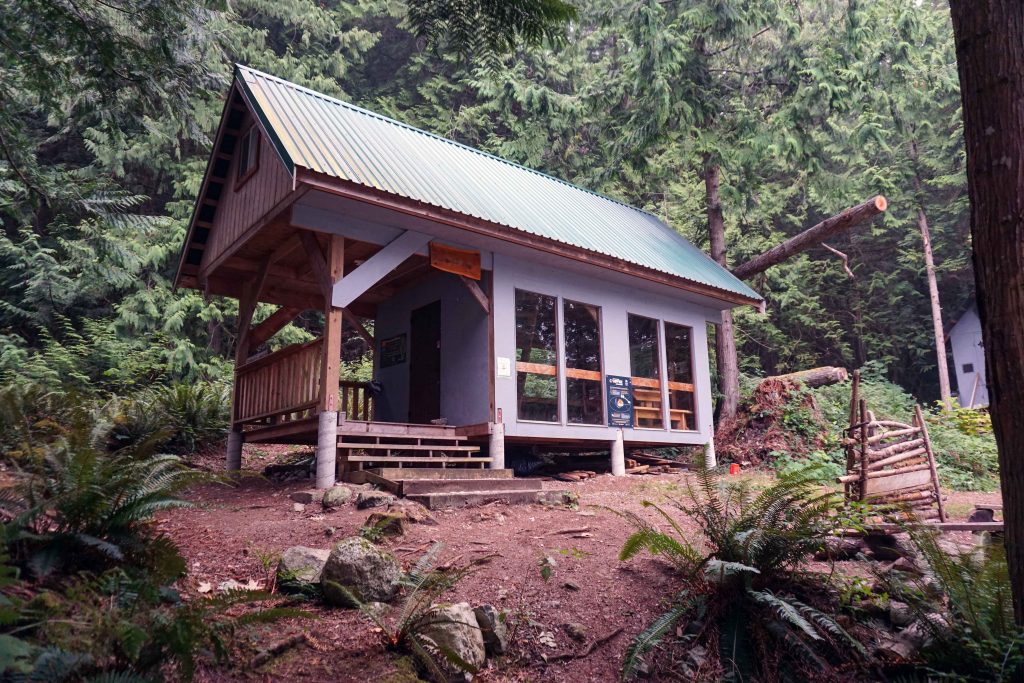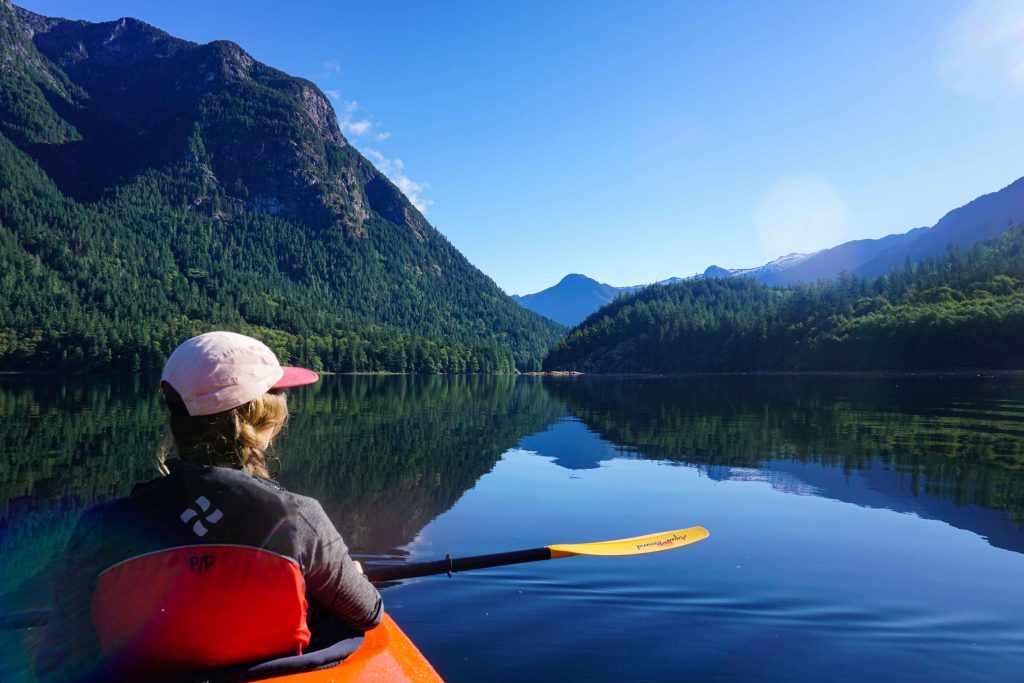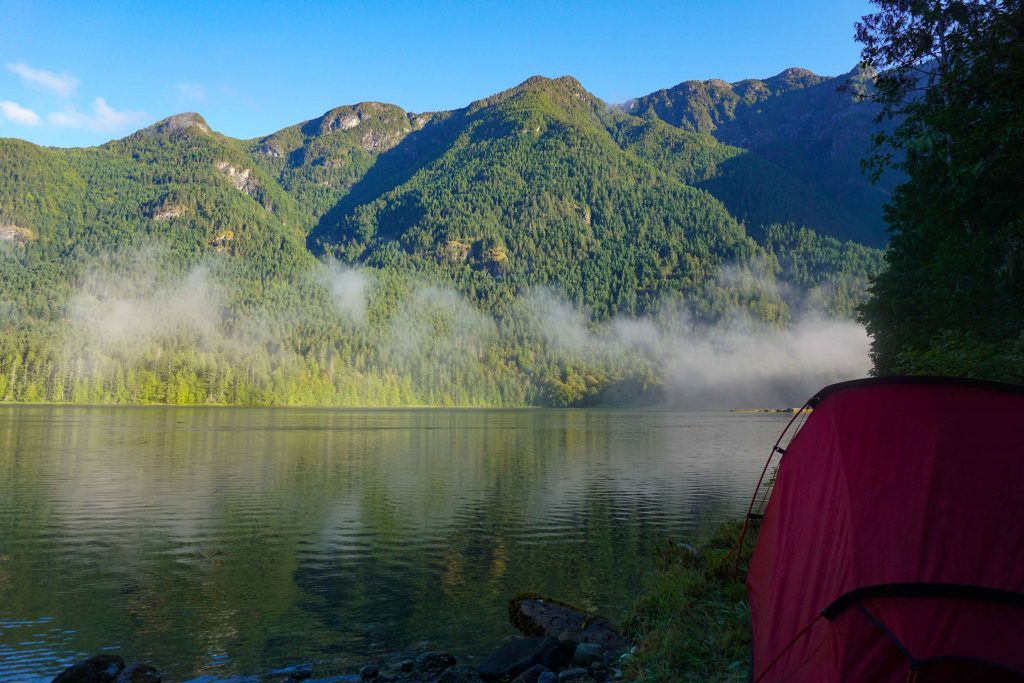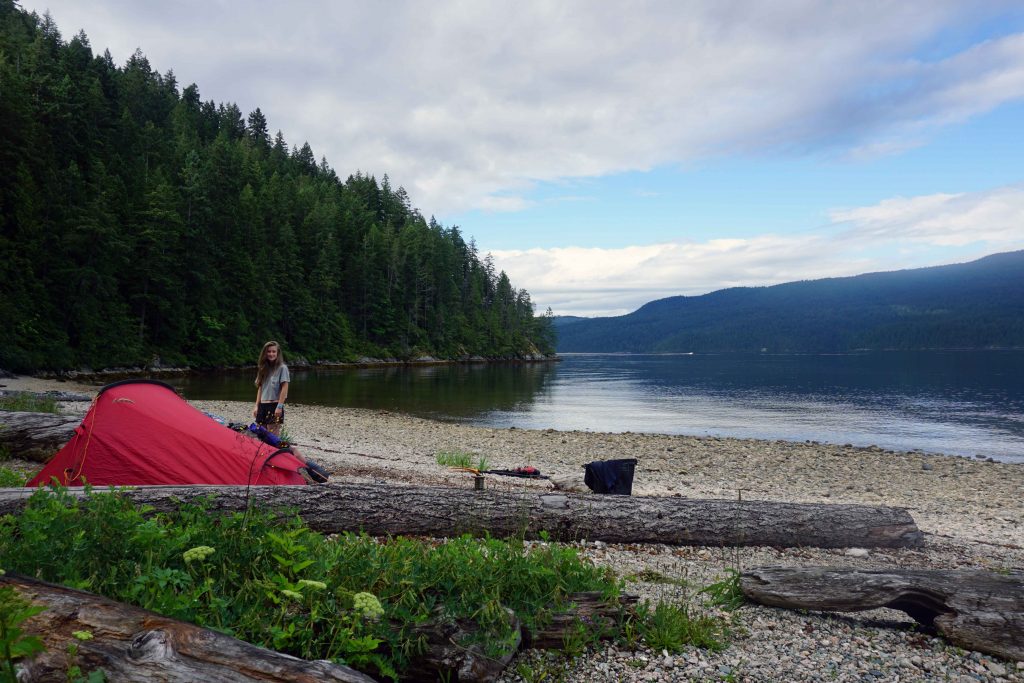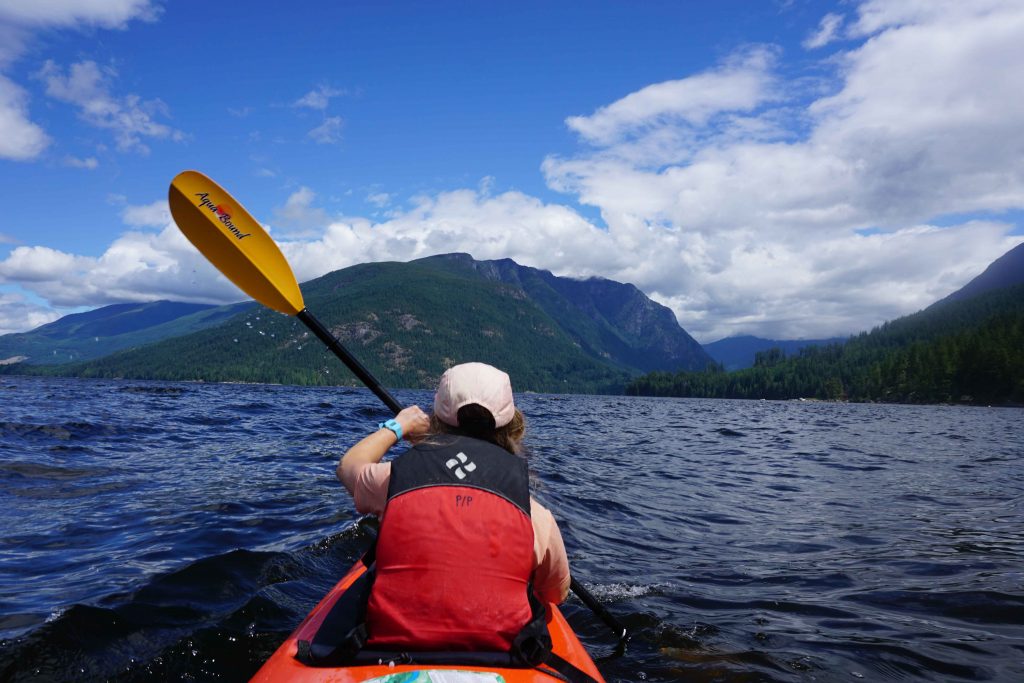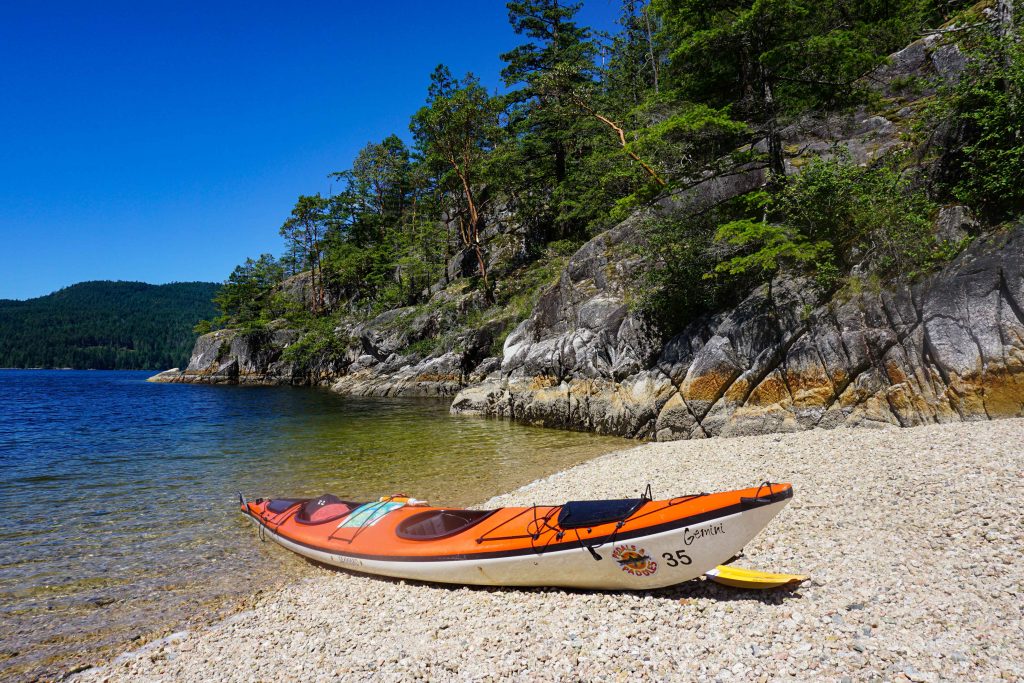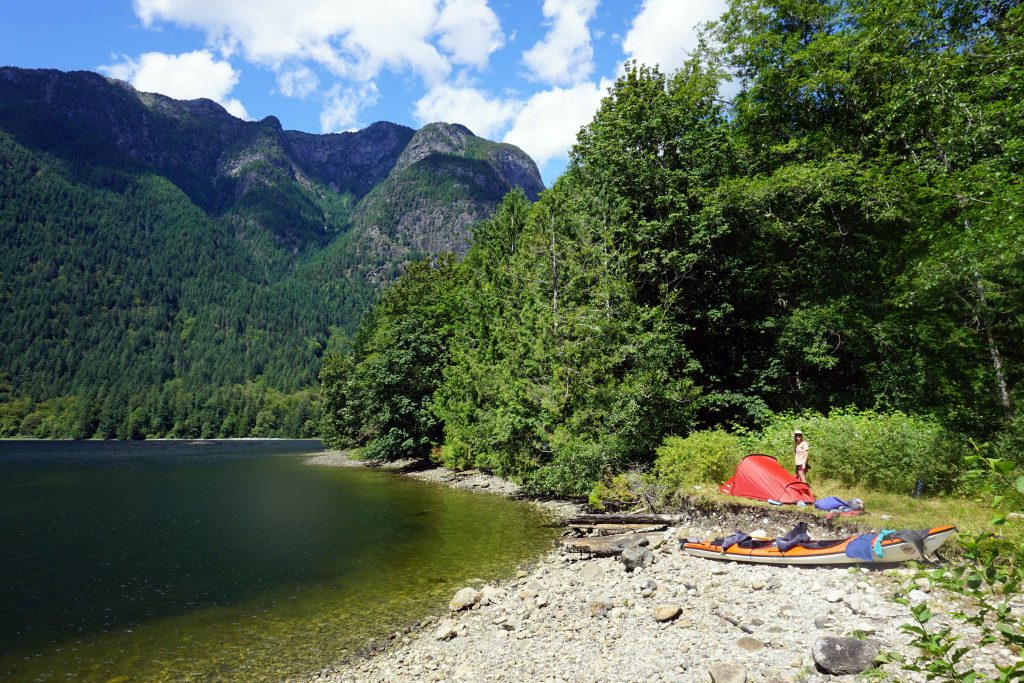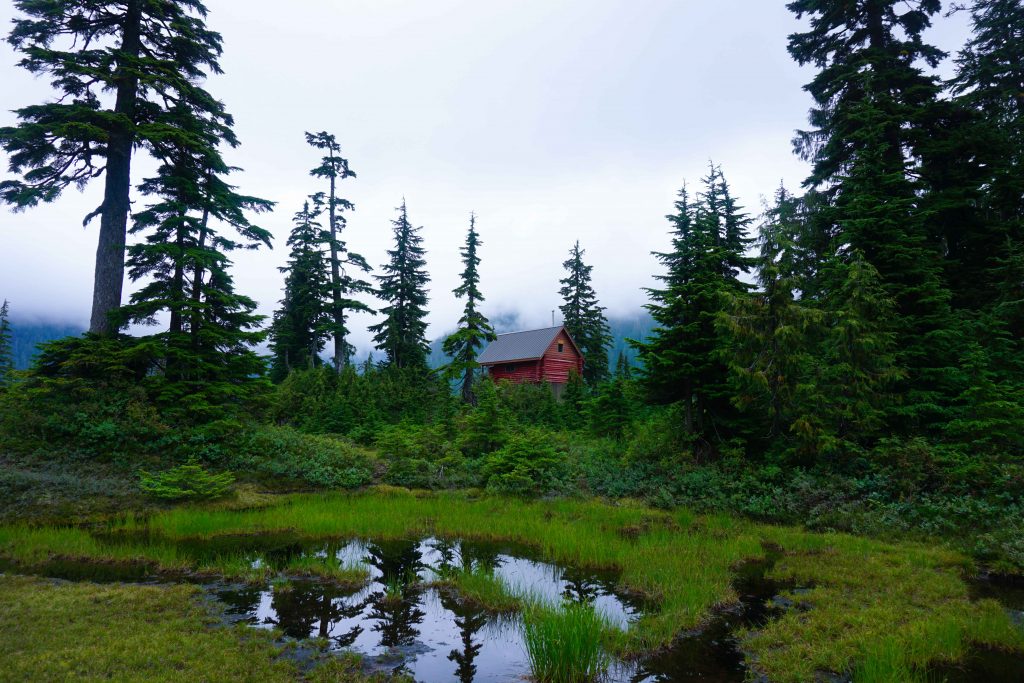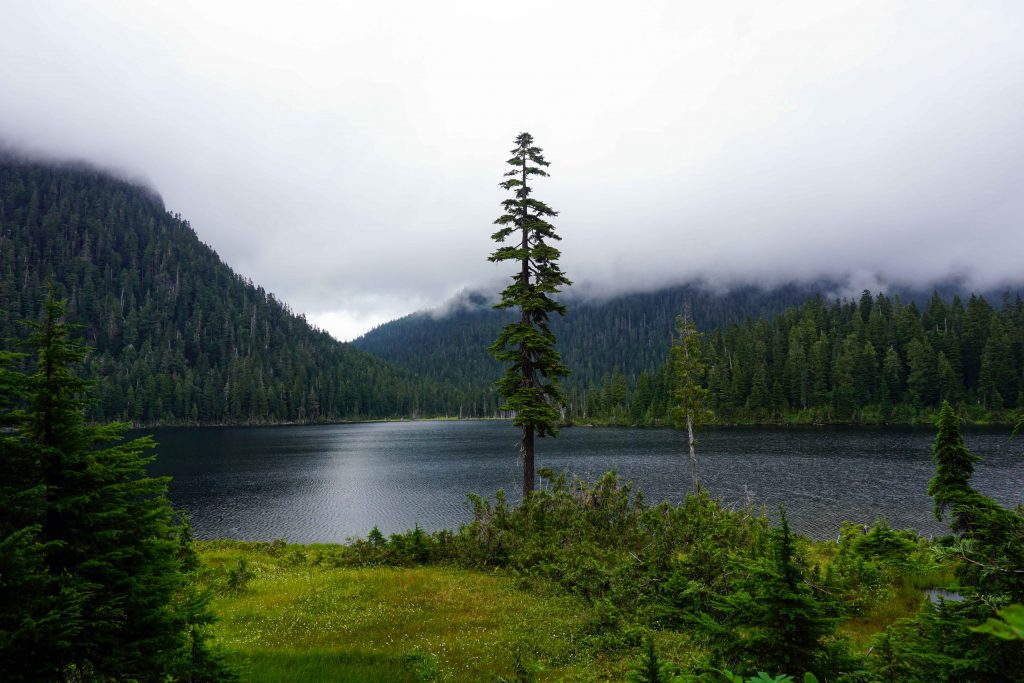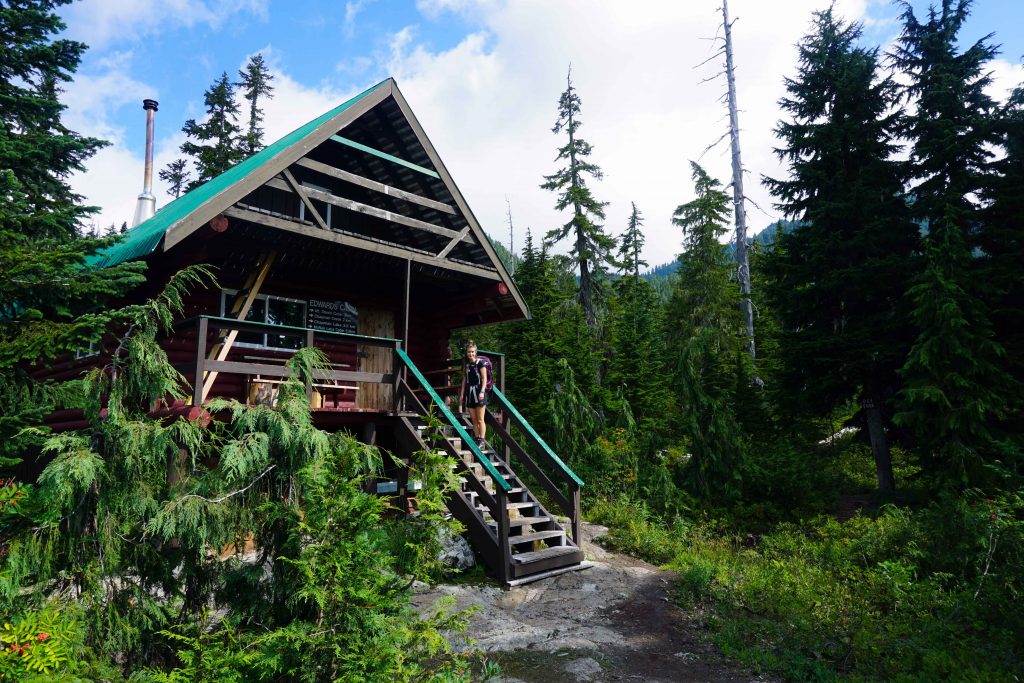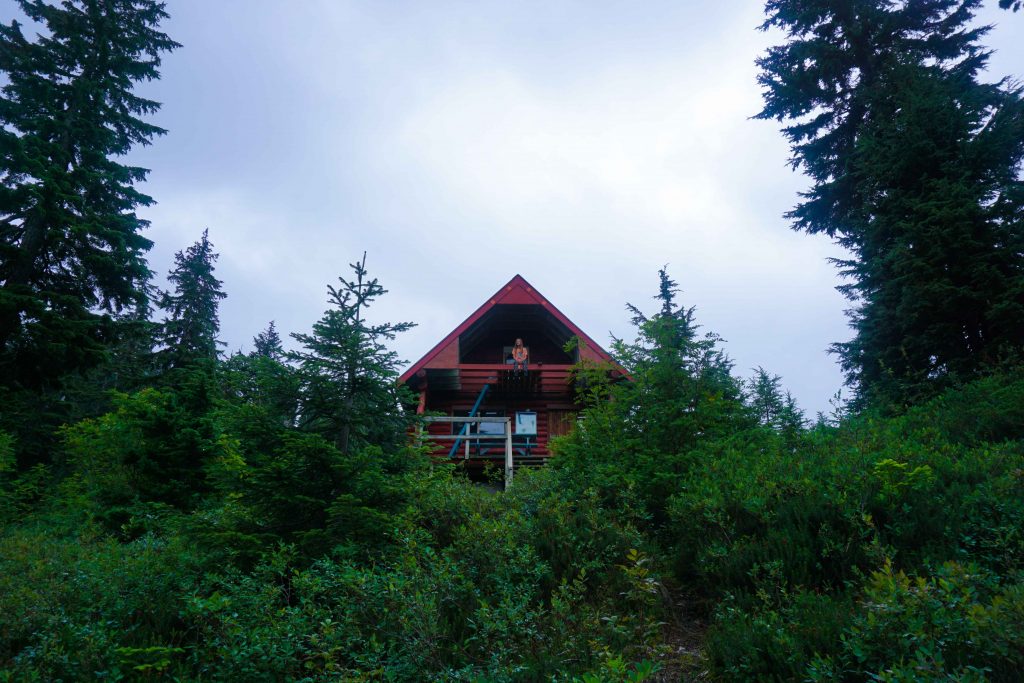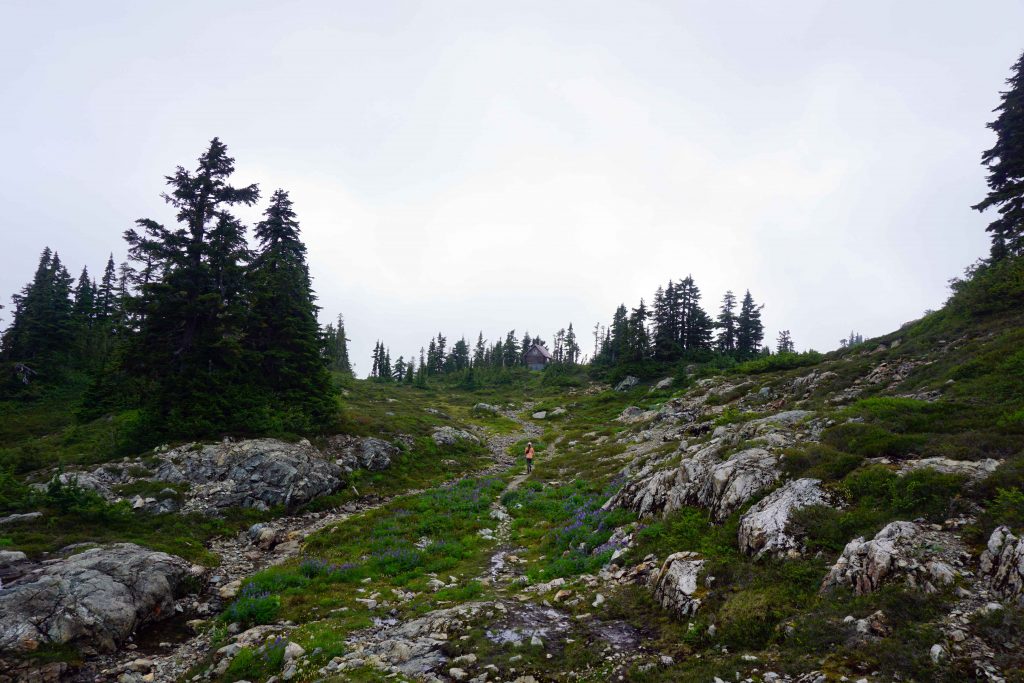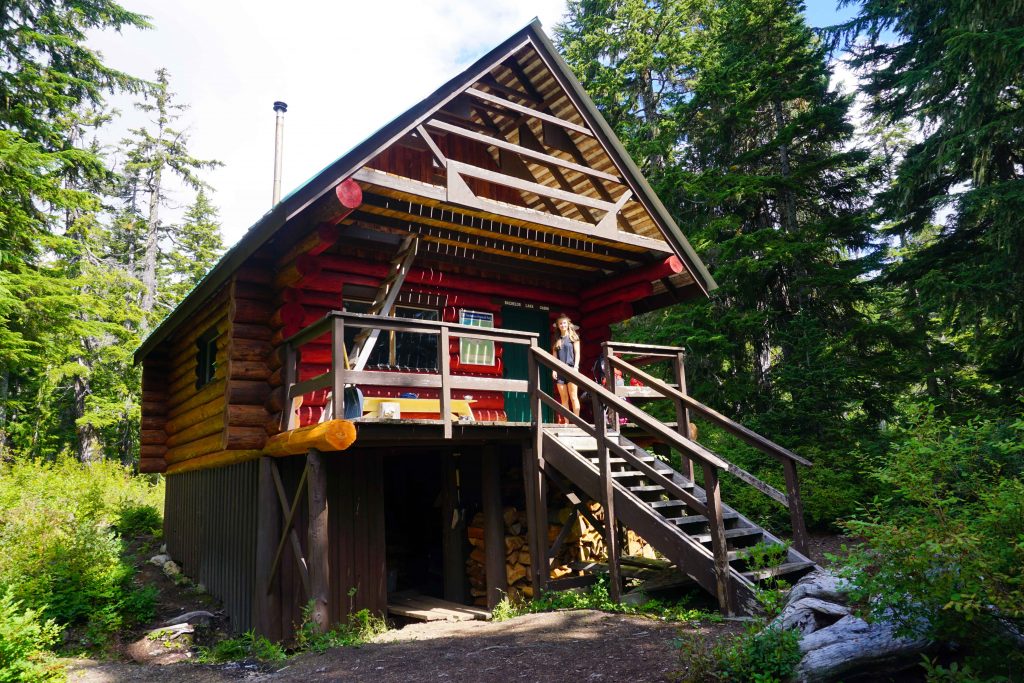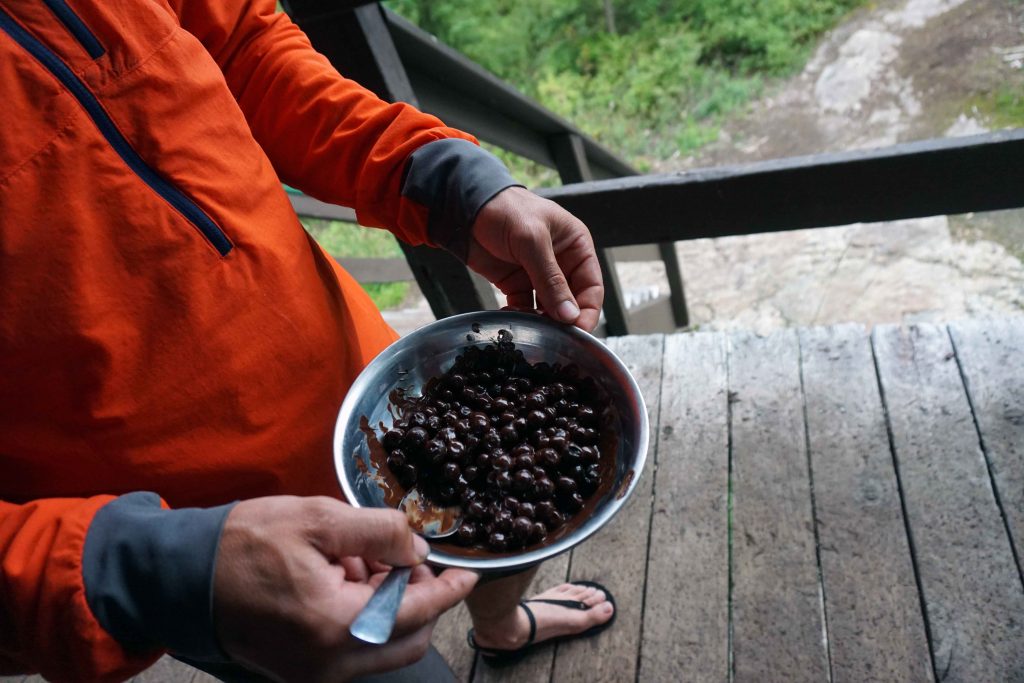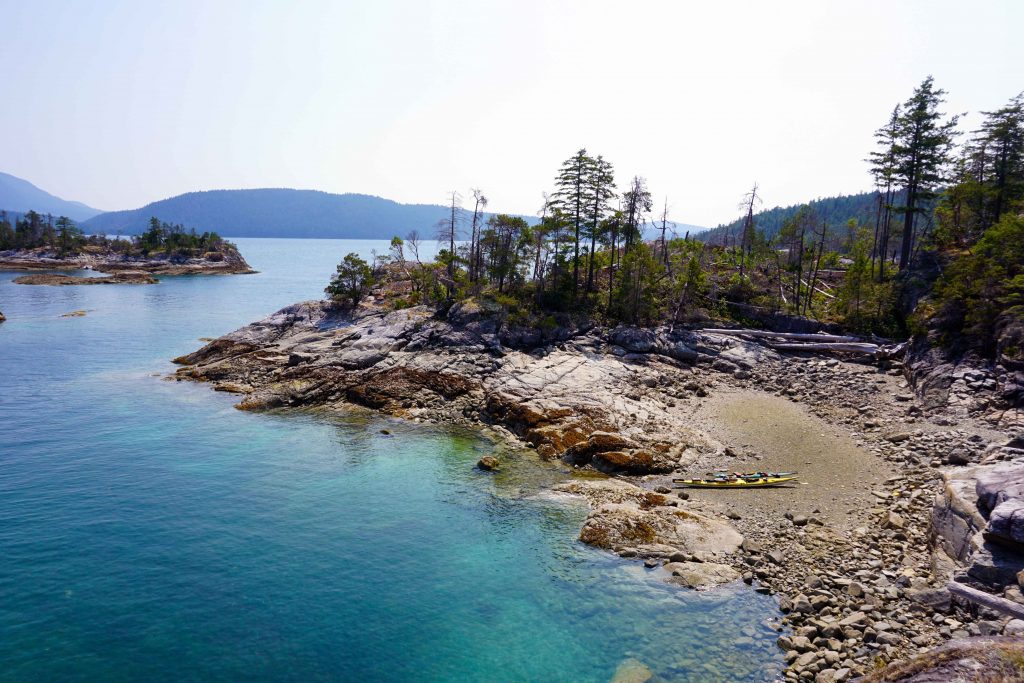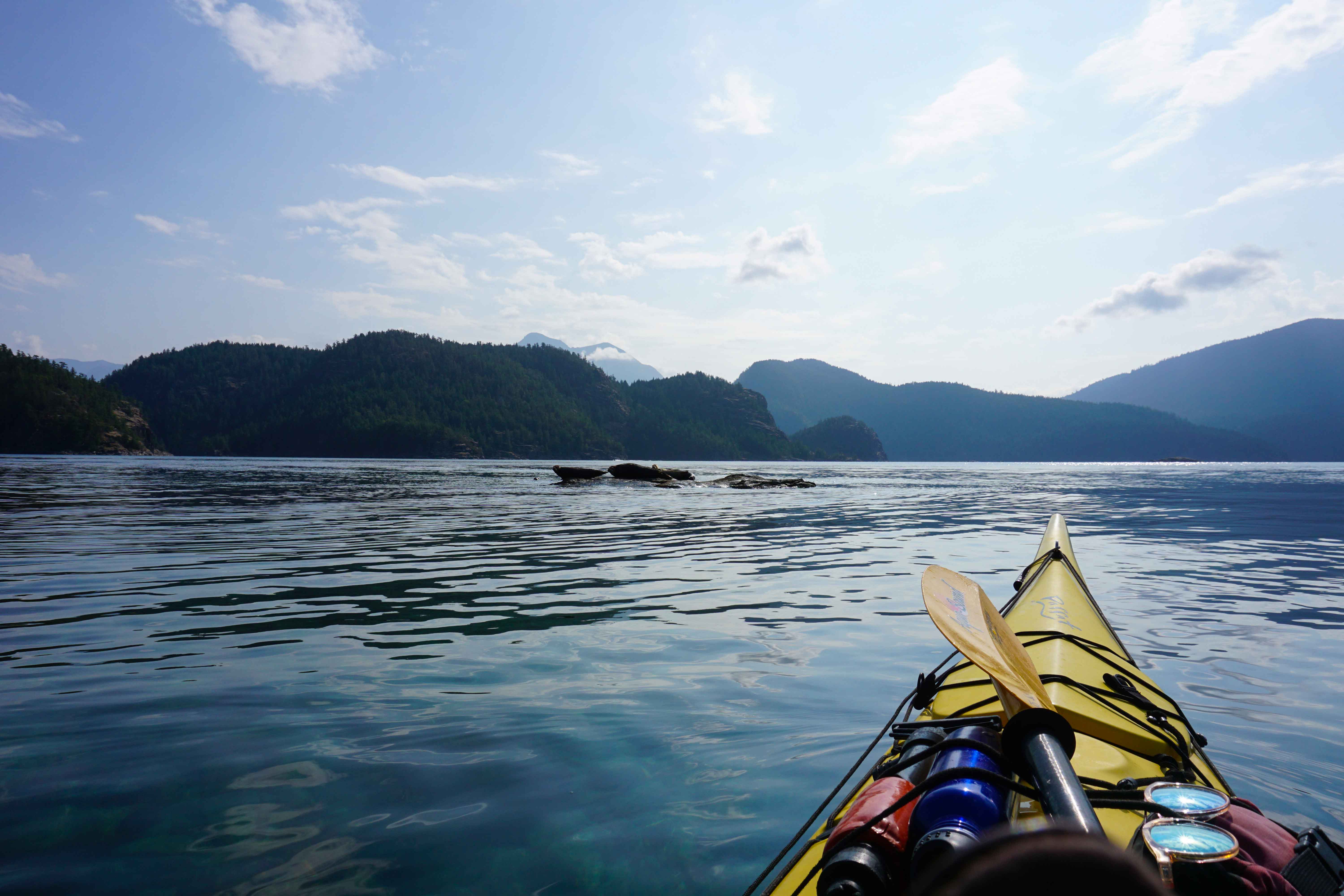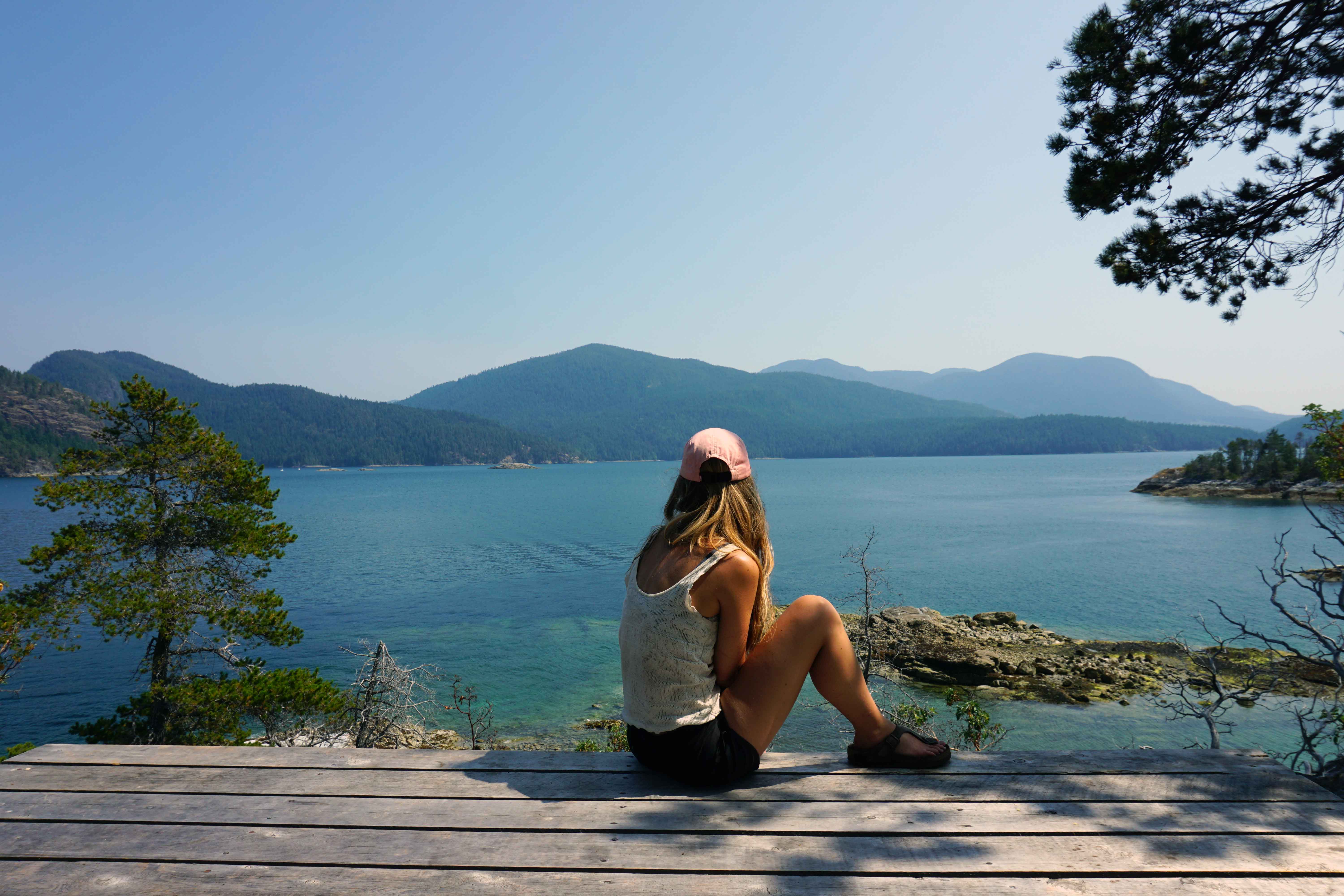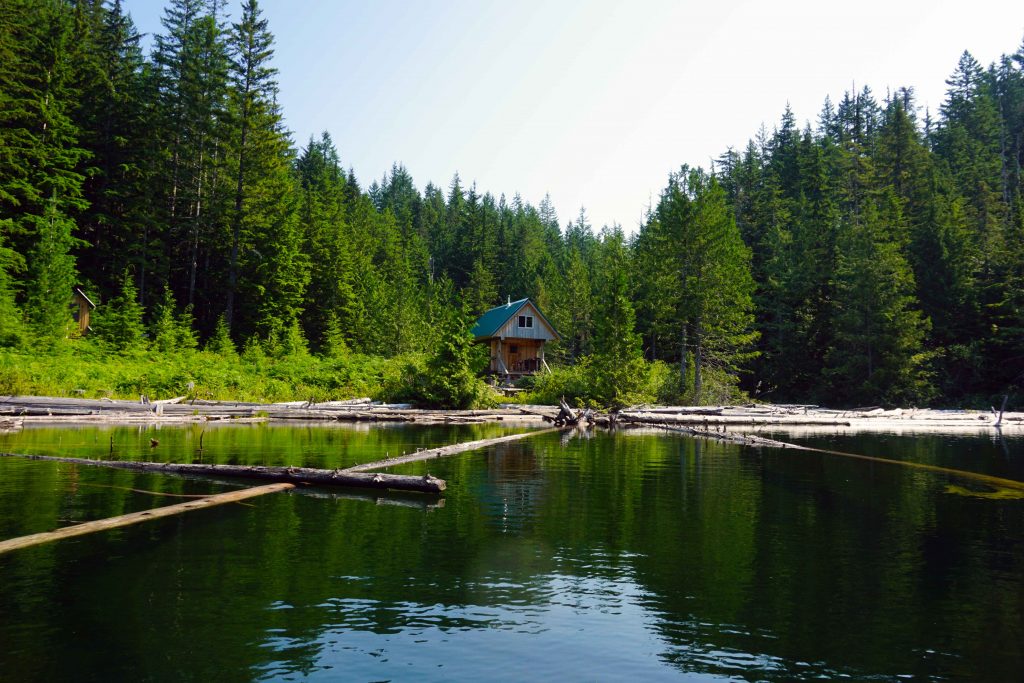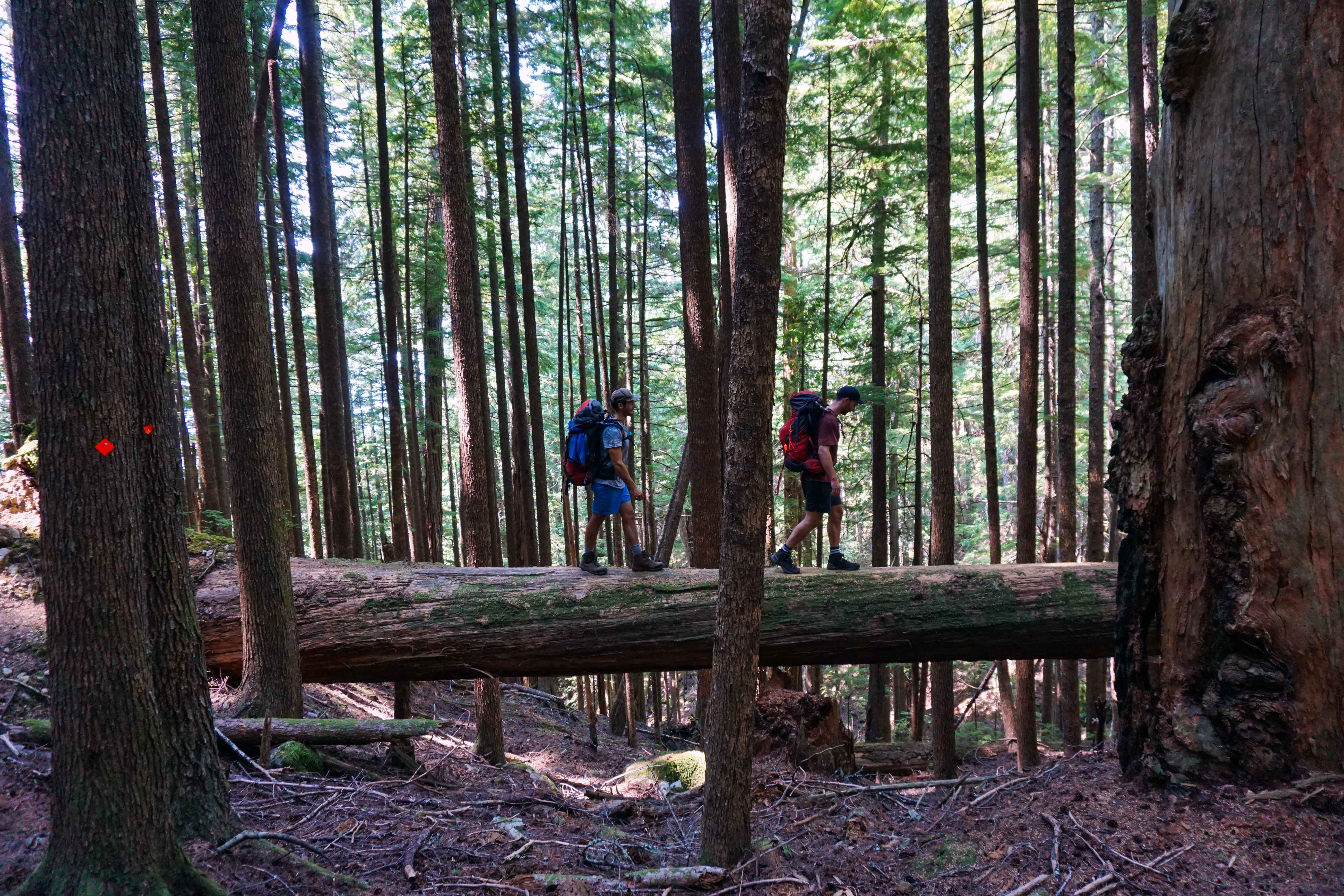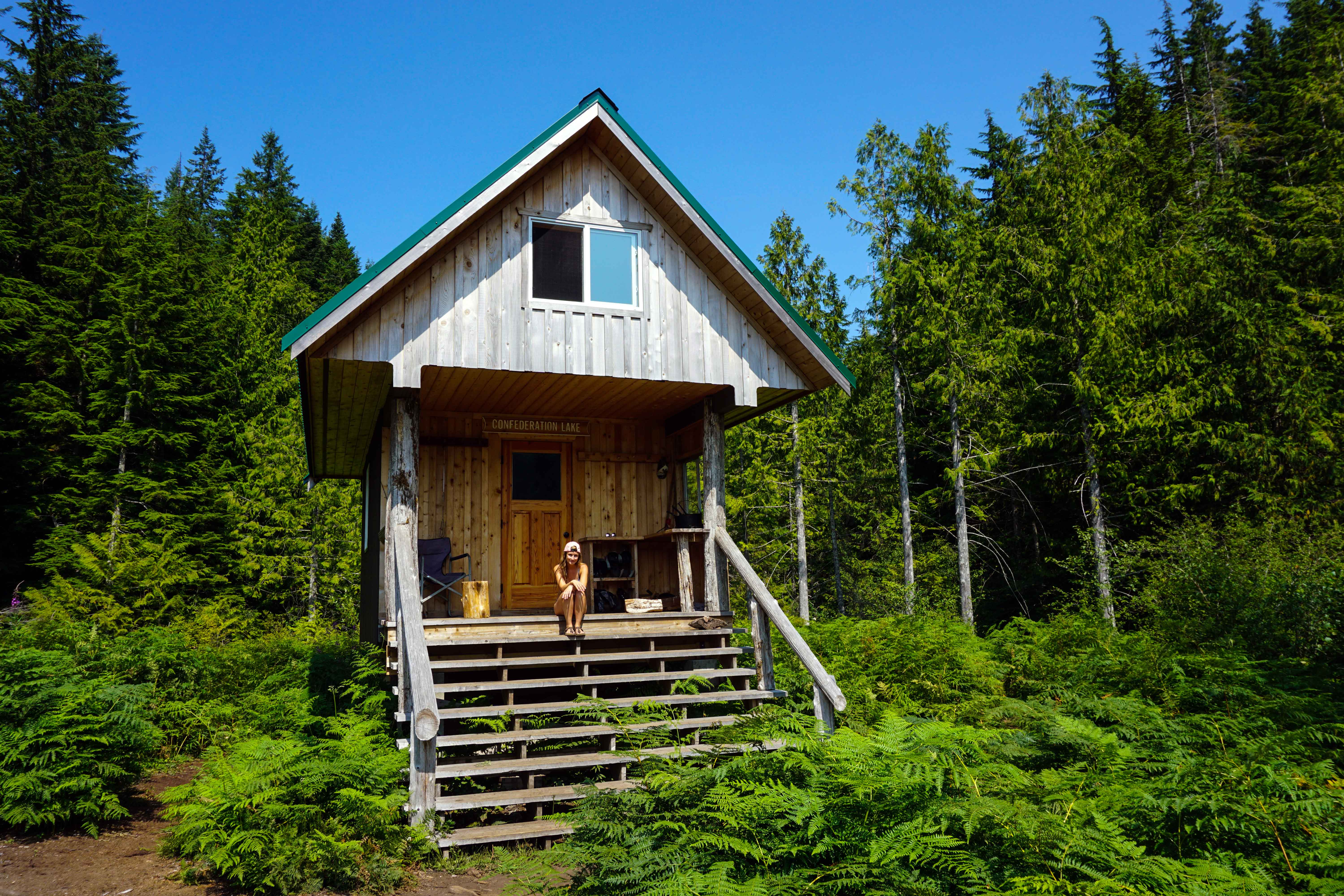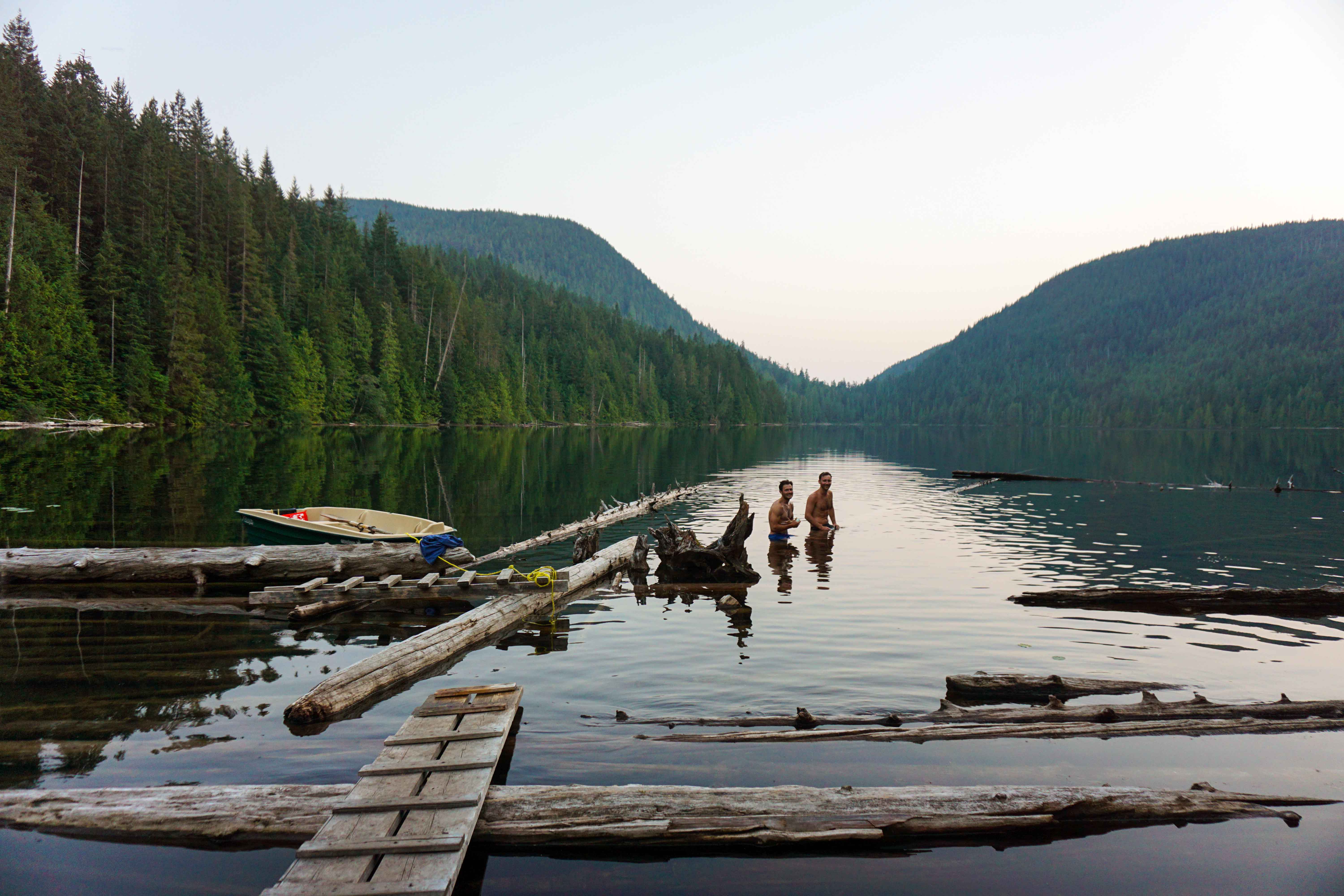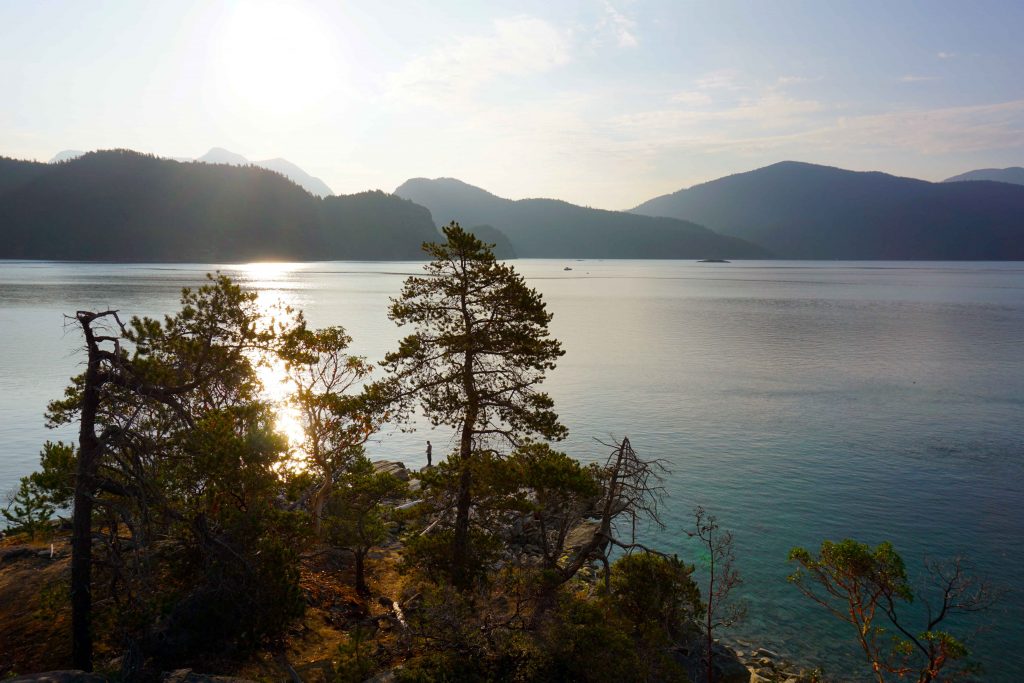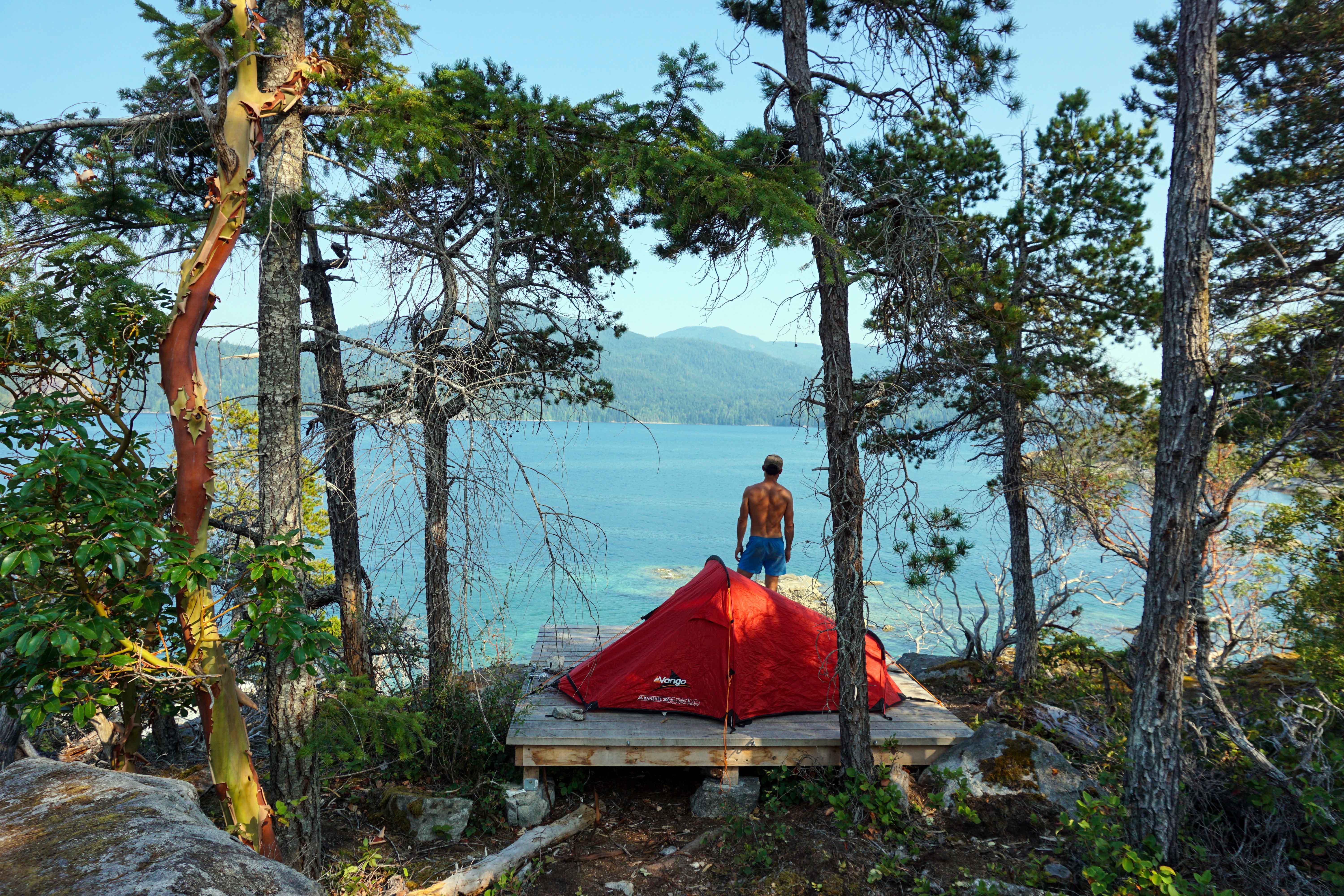The hike from Saltery Bay to Fairview Bay Hut is a 14km round-trip that weaves through the forest and along the coastline. The trailhead is easy to access, making it ideal for anyone wanting to experience a short section of the Sunshine Coast Trail.
Saltery Bay to Fairview Bay hike – quick facts
- Distance: 14km round trip
- Rating: Intermediate
- When to hike it: Any time of year
- Time needed: Approximately 5 hours
- Start/end: Near the Saltery Bay ferry terminal on the northern Sunshine Coast, British Columbia
- Camping/huts: The hut at Fairview Bay is free to stay in. If it’s full, you can always camp outside and make use of the facilities.
- Water: There are a couple of creeks along the way, as well as one near the hut. However, they can dry up in the later summer months.
- Dogs: Are permitted and can easily navigate the terrain, but cannot stay inside the huts.
- Marine access: You can also kayak or canoe into Fairview Bay Hut, which is the only hut on the SCT with marine access.
- Longer hike: You can make this into a longer hike by continuing onto Rainy Day Lake and looping back round to Saltery Bay (approx. 18km).
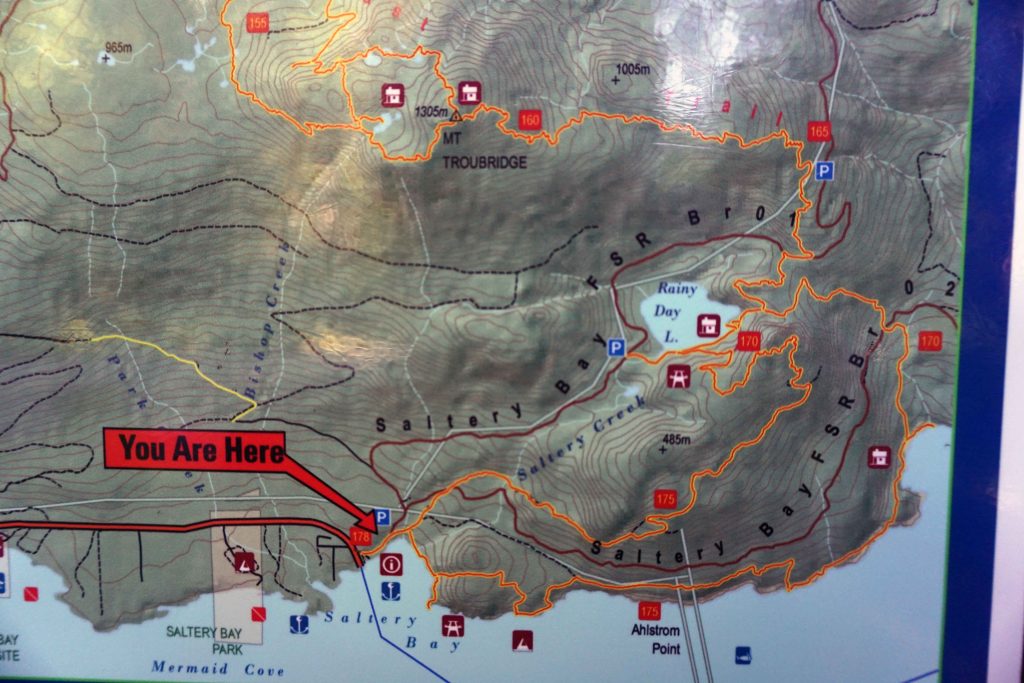
Hiking a section of the Sunshine Coast Trail
The Sunshine Coast Trail (SCT) is a 180km point-to-point hike that stretches the length of the northern Sunshine Coast. It takes around eight days to do the whole thing. If you don’t have that kind of time (or endurance!) then you can always hike a shorter section, either as a day hike or as a multi-day hike.
There are various access points along the trail. Saltery Bay is one of the most user-friendly trailheads, as it’s about a two minute drive from the ferry terminal. You don’t need a 4×4 or high clearance vehicle and there’s ample parking. You can do it as an out and back hike, or you can continue up to Rainy Day Lake and make it into a loop (which increases the distance to about 18km). Both options can be done as a day hike, or you can stop and camp at the huts – the choice is entirely yours.
[Note: the hike from Inland Lake to Confederation Lake is another good option for those wanting either a day hike or an overnight hike, especially if you don’t want to tackle any forest service roads].
If you’re thinking about hiking this section of the Sunshine Coast Trail, then here’s what you need to know.
Parking and trailhead
You begin and end the hike at the Saltery Bay trailhead, which is the southern terminus of the Sunshine Coast Trail. Parking is located on Rainy Day Lake Road. There’s both free parking and paid parking. The trailhead is just minutes from the Saltery Bay ferry terminal. There’s a wooden kiosk marking the start of the Sunshine Coast Trail, along with a map and signs pointing to Fairview Bay Hut.
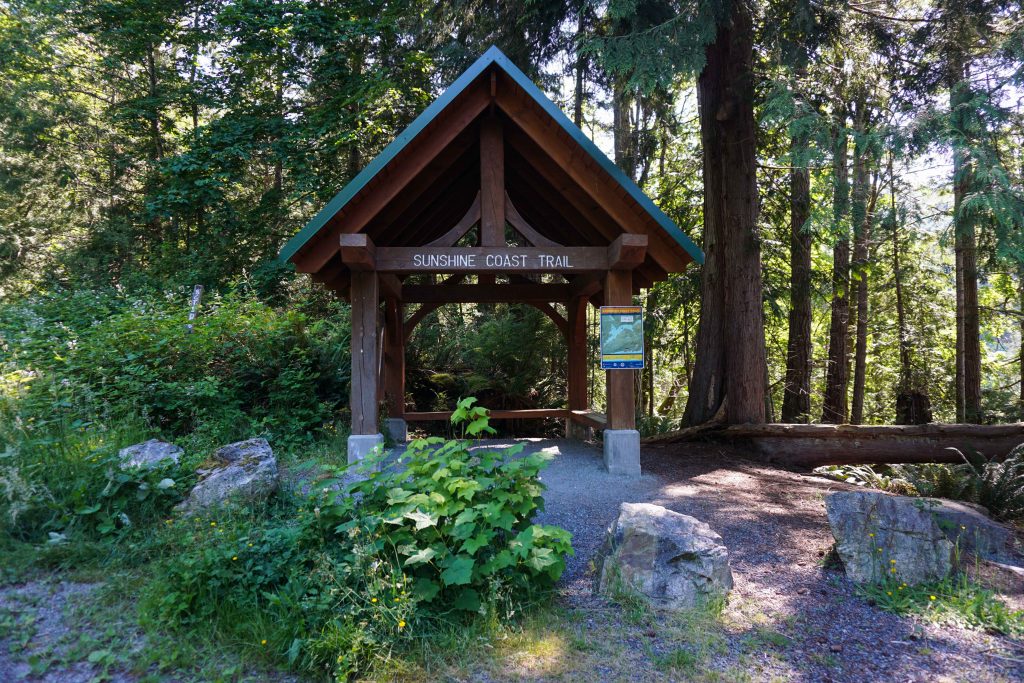
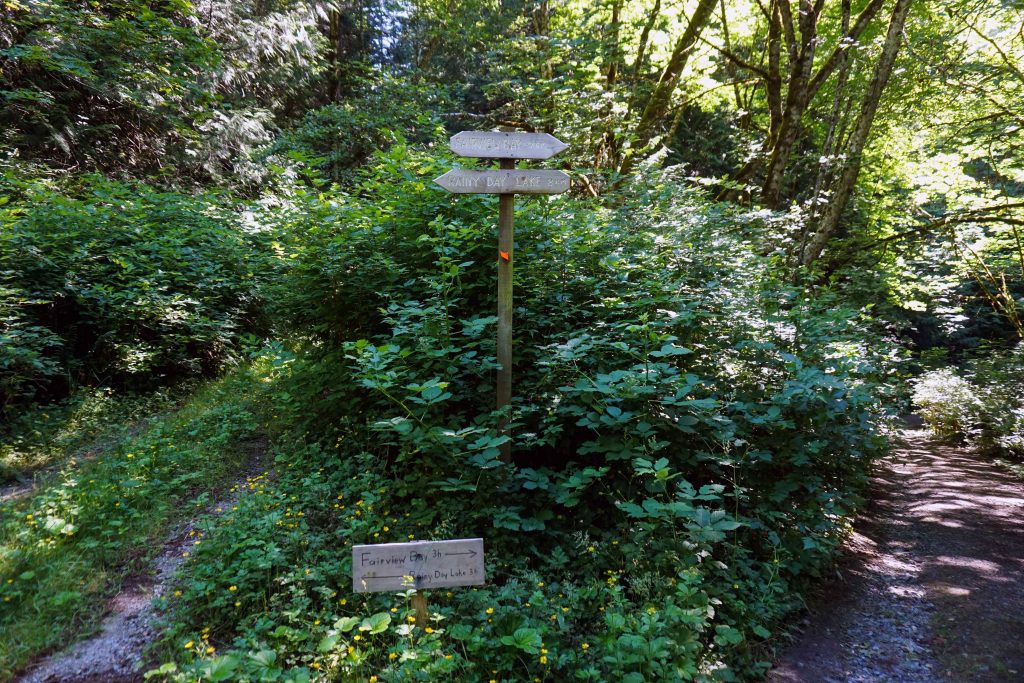
The route
The trail starts on a gravel path that heads towards sea, giving you a good view across the wharf. You then enter the forest and quickly reach a sign that reads ‘escalator’. As you might guess, the trail then heads sharply uphill, ascending through short switchbacks. Don’t be deterred – this is by the far the longest stretch of ascent you’ll have to endure!
Once you’ve reached the top of the escalator, the trail meanders through the forest and back towards the coast. Before long you’ll reach Pirate’s Cove, a rocky bluff with views across the ocean. From here you follow the coastline for a while, which is strewn with arbutus trees and sun-scorched tufts of grass.

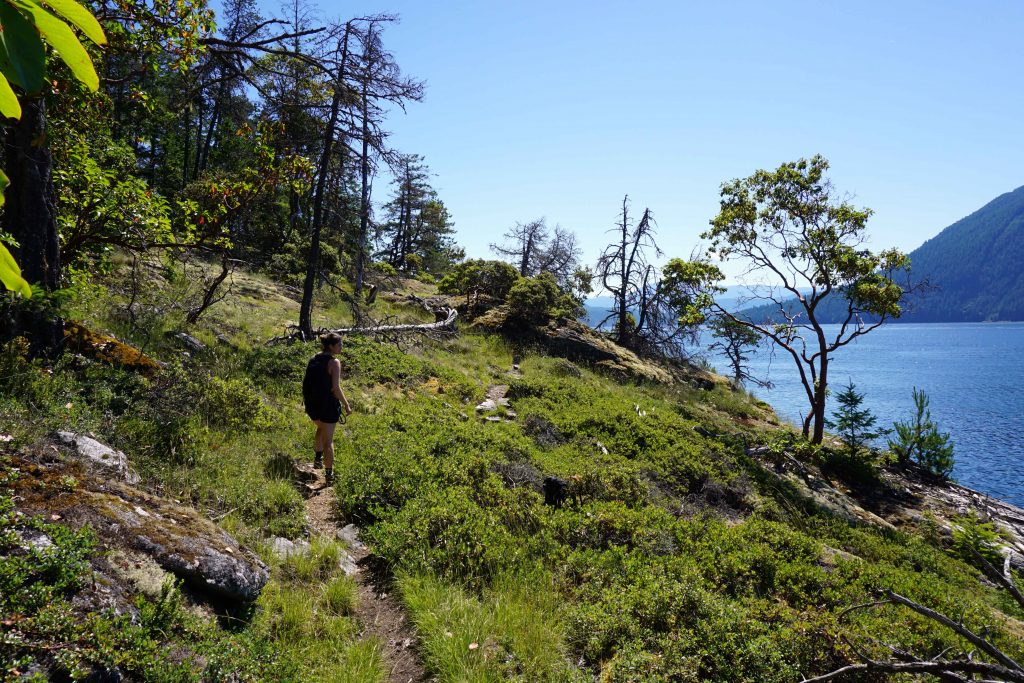
Although you aren’t scaling any mountains, the trail has enough ups and downs to keep the heart rate pumping. You’ll return to the forest, and after a short ascent will come out onto a powerline trail. It’s covered with grass and gradually ascends to a pylon. You re-enter the forest shortly after the pylon, where a sign indicates that you’re one hour from Fairview Bay Hut.
From here the trail is much the same, undulating up and down through the forest, occasionally bringing you out onto the coastline. Half an hour before the hut is another rocky bluff called Ahlstrom Point. Finally, you cross a small wooden bridge across a creek, after which the hut appears in front of you.
There are orange markers for the length of the trail, as well as signs indicating how many kilometers you’ve travelled. Navigation is very easy and it’s unlikely you’ll get lost on this section of the trail.
Fairview Bay Hut
The huts on the Sunshine Coast Trail are free to use and are maintained by a team of volunteers called the Powell River Parks and Wilderness Society (PAWS). These are rustic backcountry huts and have few facilities.
The Fairview Bay Hut is particularly pleasant, as it has windows across one side, allowing you to enjoy the view no matter what the weather. There are a couple of benches and tables downstairs. The sleeping quarters are upstairs. If you want to stay the night, you’ll need to bring your own sleeping mat and sleeping bag. The huts can get full, so it’s always wise to bring a tent along, just in case.
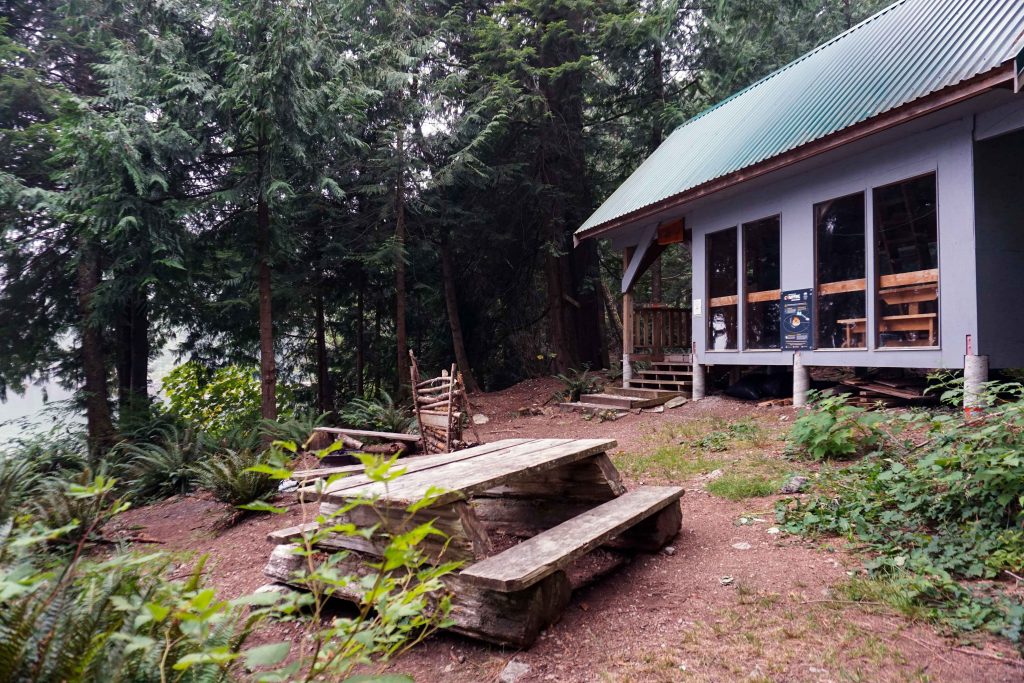
The other bonus of Fairview Bay Hut is that it’s in a prime seaside location. You’re just steps from the beach. When the weather’s hot, the water is the perfect temperature for a dip. The view across the ocean and the dense forest is incredibly beautiful, and you’ll likely see seals and eagles (and maybe whales if you’re really lucky!)
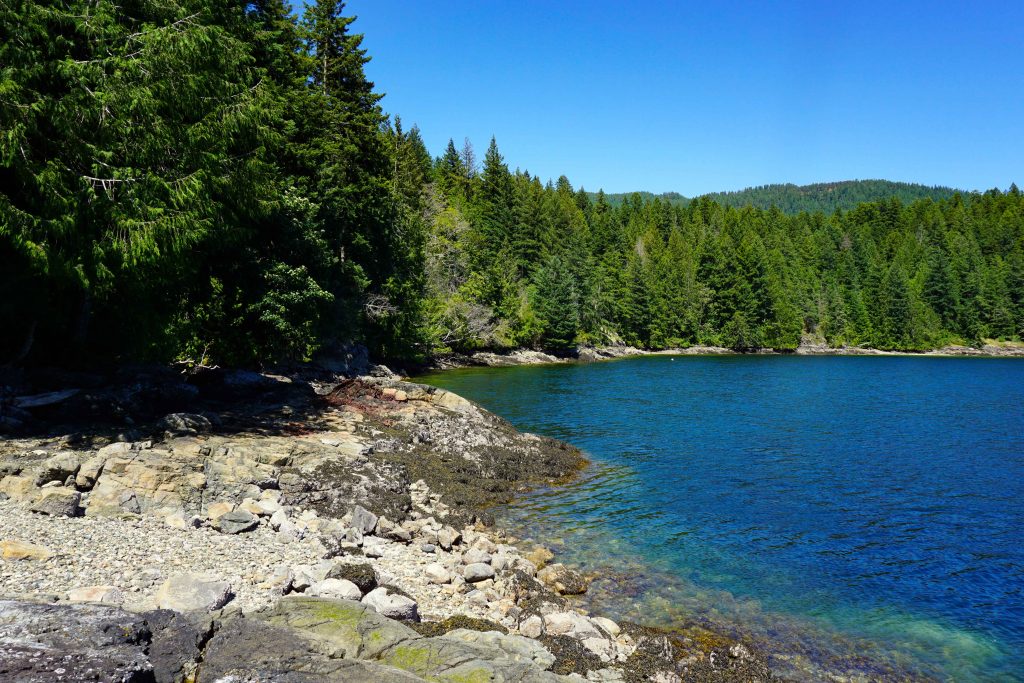
The return journey
If you are only hiking to Fairview Bay Hut, then you’ll need to return the same way you came.
Time and distance
It’s 7km from the Saltery Bay trailhead to Fairview Bay Hut. This makes a round trip of 14km. Due to the undulating nature of the trail, the outbound journey and the return journey take about the same amount of time. It took me 2.5 hours each way, going at a relaxed to moderate pace, with a few stops along the way to take photos and admire the view.
The Sunshine Coast Trail website suggests this hike will take two hours each way, which may be optimistic for some.
Make it into a loop by hiking to Rainy Day Lake Hut
If you’d like to see more of the Sunshine Coast Trail – or you just like hiking in a loop – then you can continue on to Rainy Day Lake Hut. However, you need to be aware that this will increase the distance and the amount of elevation gain.
From Fairview Bay Hut, you continue to follow the Sunshine Coast Trail northbound. You quickly begin to ascend. It’s quite steep and continues for a couple of kilometers, making it quite the cardiovascular workout. It’s only around 3km to Rainy Day Lake from Fairview Bay, but you’ll be glad to get there. The hut has a similar set up to Fairview Bay Hut, only the downstairs isn’t enclosed by walls. It’s perched high on a rocky outcrop called Hailstone Bluff. It’s just a short hop down to the lake, which has a pontoon and is a great place to go for a swim.
[Note: you can actually drive to Rainy Day Lake. See the Sunshine Coast Trail website for more details].
To return to the parking lot, you need to continue around the shore of the lake for a short distance. You’ll come across a signpost pointing you back to Saltery Bay, with the trail cutting left back into the forest. It’s about 8km from Rainy Day Lake to Saltery Bay. Keep following the orange markers. You’ll ascend some more up to a viewpoint where you can see across the Jervis Inlet. There’s then a long descent, after which you’ll reach a road that brings you back to Saltery Bay.
Navigation on this section of the trail is sometimes confusing, particularly as there are a couple of spurs and it’s not always obvious which direction to take. There’s also little phone signal.
You can do this loop as a long day hike. Or, you can turn it into a multi-day hike, staying at either (or both) huts.
